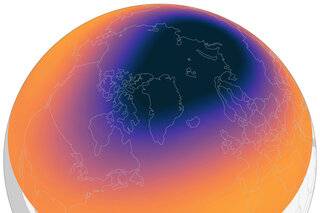A new study examines water use in three large U.S. water systems: Austin Water, the Southern Nevada Water Authority, and Tampa Bay Water. Changes during drought, sustained engagement, collaboration, and education can lead to long-lasting changes in values around water, the study finds.
More often than not, La Niña brings dry winters to the U.S. Southwest. Was there something unusual about our current La Niña that would explain why the area got soaked instead?
One of the most ambitious reef-restoration efforts ever attempted worldwide faces a tough challenge: restoring reefs to their past glory while helping them confront future change.
Ice coverage has reached a record low in the Great Lakes for this time of year. As of February 13, 2023, only 7 percent of these five freshwater lakes was covered in ice, significantly below the 35-40 percent ice cover expected.
When white lesions began appearing at the famously intact Flower Garden Banks coral reef system, scientists knew a rapid, multi-agency, collaborative response was vital to learn from this coral disease outbreak.
NOAA PMEL oceanographers and colleagues are leading an effort to establish first-of-their-kind standards for calculating and reporting trends in ocean acidification observations
Is climate change outpacing drought assessment? February 28-March 1, the National Integrated Drought Information System and the U.S. Department of Agriculture will host a workshop to address this question. A pre-workshop virtual webinar, recorded February 10, is already available online.
Poster-sized collection of global temperature maps since 1850 makes it easy to spot the influence of global warming.
The most common forest fires in the north-central United States are prescribed burns, which are less commonly studied than wildfires. A new study on prescribed burns in northern Michigan revealed distinct chemical signals of certain trees native to the area, highlighting the importance of further studying this region.
